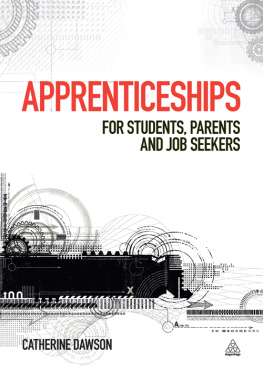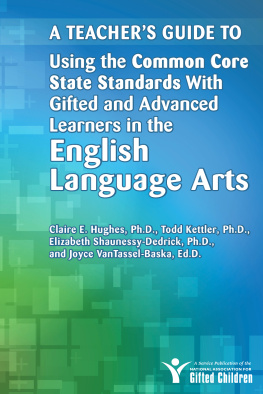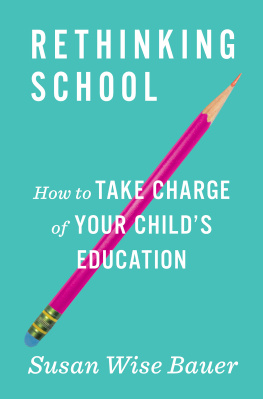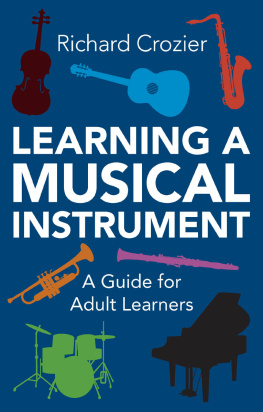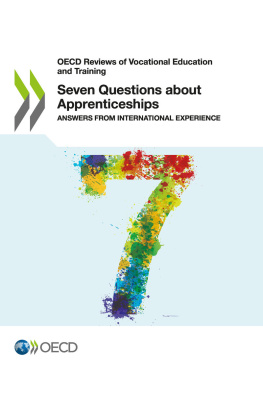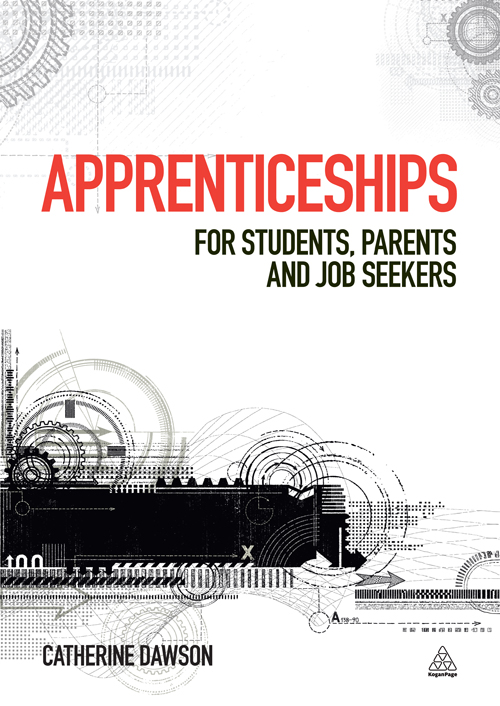Note on the Ebook Edition For an optimal reading experience, please view large
tables and figures in landscape mode. |
This ebook published in 2011 by
Kogan Page Limited
120 Pentonville Road
London N1 9JN
UK
www.koganpage.com
Catherine Dawson, 2012
E-ISBN 978 0 7494 6334 2
Contents
A pprenticeships provide the opportunity for employees (and trainees) to learn on the job, while receiving a wage. They have been available in various forms for hundreds of years in the UK and today are being promoted heavily as a legitimate and viable route into employment for young people and adults alike. Indeed, on 7 February 2011 Vince Cable, the Business Secretary, promised the creation of 100,000 new apprenticeships by 2014, with 75,000 of these being for adult apprentices.
This book has been written to provide comprehensive, down-to-earth information and advice for people wishing to know more about the moder n-day apprenticeship scheme. It includes information about the history, back ground and type of apprenticeships available, along with practical informatio n about finding, choosing and applying for an apprenticeship. It also contains advice on funding an apprenticeship, employment/training contracts, health and safety, mentoring and training, insurance issues, employment rights, redundancy and dismissal.
The book is aimed at the following groups of people:
- s chool pupils who are thinking about what to do after school;
- s chool and college leavers who need to make decisions about their future employment;
- s chool and college leavers who prefer to train on the job and receive a wage, rather than go to university;
- p arents who want to find out more about modern-day apprenticeships to ascertain whether undertaking an apprenticeship would be a suitable route for their child;
- u ndergraduates who are thinking about future careers;
- g raduates who have been unable to find a job, and who feel that they need to try an alternative route into employment;
- a dults who are thinking about retraining or changing careers;
- p eople currently out of paid work who want to find employment through becoming an apprentice;
- f ull-time and part-time adult learners.
The book is divided into four sections. The first provides a general overview of the apprenticeship scheme, including the history, background, facts and figures, how it works, the types of apprenticeship that are available an d information about the organizations that take part in, and run, the scheme.
The second section provides information for school, college and university students and adult learners. It helps them to weigh up the pros and cons, assess alternatives, choose the right scheme, make an application and complete the apprenticeship successfully.
The third section is aimed at parents. It provides information for those who want to know more about apprenticeships, those who are unsure about what an apprenticeship entails and parents who have misconceptions about the scheme. It provides information about how the scheme works and how it can be of benefit to young people. It also advises parents on how they can help with decision making and offer support before, during and after their childs apprenticeship programme.
The fourth section is aimed at jobseekers, including people who are out of work and those who are looking to change their careers. Often adults are overlooked when apprenticeships are described. However, apprenticeships are available for adults, despite government funding being directed heavily towards younger groups. Adults, therefore, are now viewing apprenticeships as a useful way to change, or progress in, their chosen career. Also, the opportunities for adults are likely to increase as more funding becomes available for the adult apprenticeship scheme.
and throughout the book have been edited slightly to enhance readability.) Appendices 4 and 5 go on to provide useful addresses and websites for anyone who wishes to follow up any of the information provided in the book.
I have worked in the education sector for almost 30 years, teaching adults and conducting research with young people, students, jobseekers, apprentices and employers. My research has highlighted the importance of providing practical, down-to-earth information about learning and earning opportunities so that people can make informed choices based on sound information and practical examples.
Apprenticeships can and do provide an opportunity for people to begin and progress within their chosen career. However, if you intend to follow this route it is important that you make the right choices and receive the best possible information, advice and guidance. Through doing this you will be able to avoid problems that can occur during your apprenticeship and overcome pitfalls that may arise as a result of making inappropriate choices.
This book provides detailed information and advice that will help you to make the right decisions. It will also help you to deal with (and overcome) problems if and when they occur. I hope that you find this book useful and I wish you every success with your apprenticeship and chosen career.
T oday apprenticeships are nationally recognized programmes designed by industry to equip young people and adults with practical skills for work. However, apprenticeships, in various forms, have been utilized for centuries as a means of passing on skills and trades from a master to an apprentice (master could include both men and women, for example seamstresses took on apprentices). Indeed, early on in the development of apprenticeships it was illegal for someone to learn a craft without having paid the required fee to the authorities to become an official apprentice.
Rules and regulations have changed constantly over the centuries, usually in response to technological and political changes, eventually metamorphosing into the system that we see today. This chapter gives a brief history of apprenticeships and discusses the structure and framework of the current apprenticeship system.
The first official use of the term apprentice was during the Middle Ages. Prior to this time workers had passed on their skills and knowledge to their own children and to local younger workers on an informal basis, without a specific system in place. However, as this system was based on private contract between apprentice and master it could be open to abuse by either party. Therefore, during the 14th and 15th centuries it was felt that some type of regulation was required to bring order to the system. For example, new regulations were introduced that meant that masters could no longer force their apprentices to carry out tasks outside their trade and apprentices were expected to be obedient, industrious and orderly (Thomas, 1929).
In the Middle Ages apprentices tended to be aged 10 to 15 years. They would provide cheap labour in exchange for food, lodgings, necessary woollen and linen clothing, and training in a trade or craft. They had to agree to train for a minimum of seven years, after which they could progress to the positions of craftsman, journeyman, master and eventually grandmaster. Many apprentices, however, served for a much longer period and in some cases were almost adopted by their masters (Thomas, 1929). This was often the case when masters would receive boys only from their own village or town.
Despite being self-employed, Belper nailers founded a kind of trade union with rules setting out conditions whereby young boys could enter the trade. So tight were the rules that only the children of established nailers could normally learn to be a nailer, an occupation he could only claim after seven years of apprenticeship. Despite being unionized, nailers were forbidden to buy stock rods from anywhere other than from approved nailmasters or factors, otherwise they faced a heavy fine. Anyone attempting to take on an apprentice from outside the closely linked family network could only do so by paying a premium of 20 to the union, a massive sum to a working class man in the 19th century.

